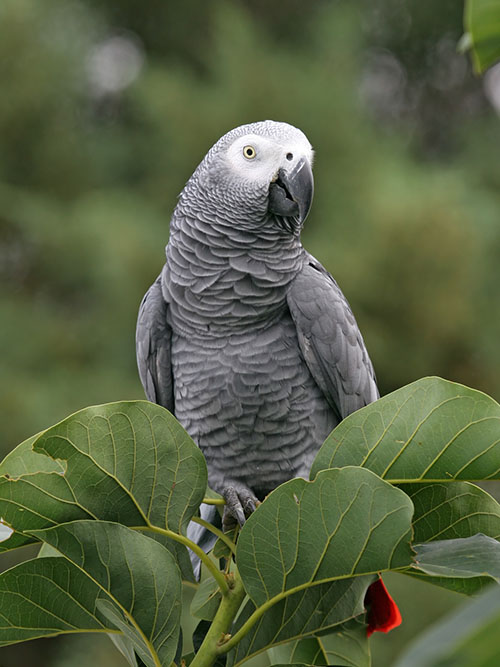Adult African Grey
Grey parrots depend on large, old trees for the natural hollows they use for nesting. Studies in Guinea and Guinea-Bissau have found that African Greys' preferred species of nesting trees are also species preferred for timber. The relationship between the status of the species and the status of primary forest is positive. Where the forests are declining, so too are populations of grey parrots.

